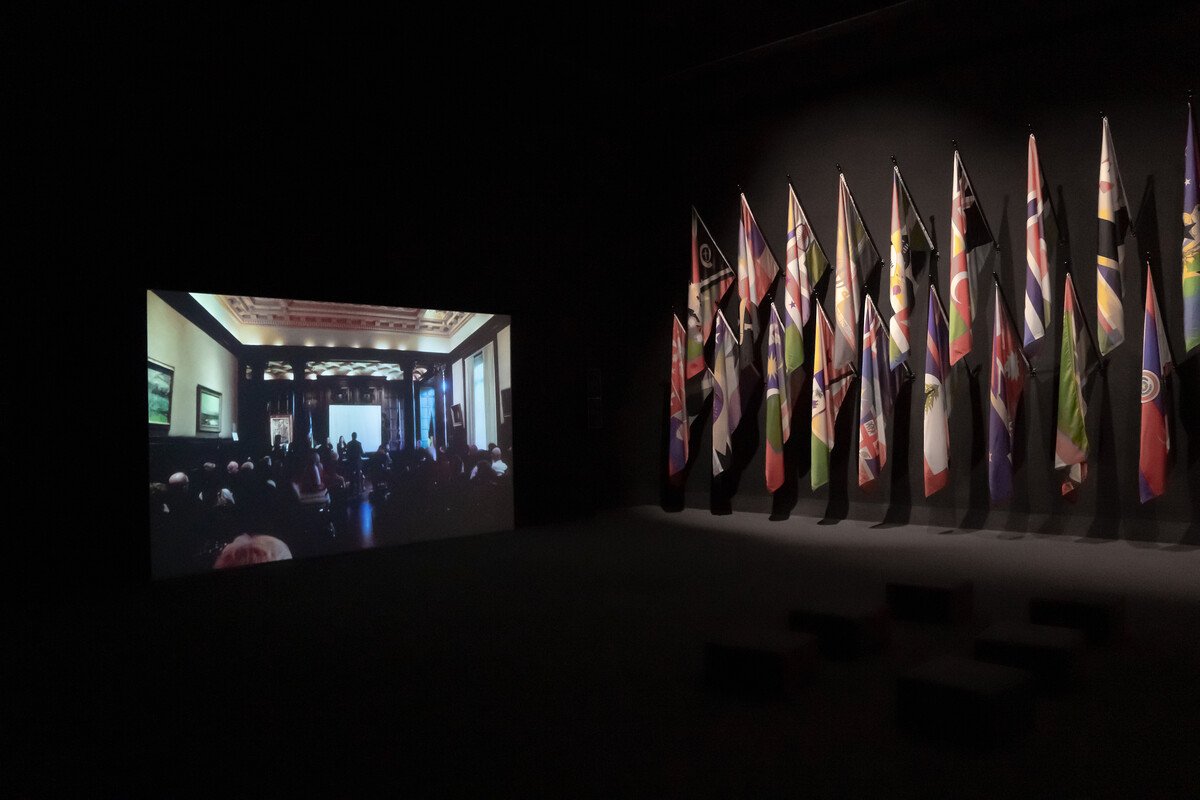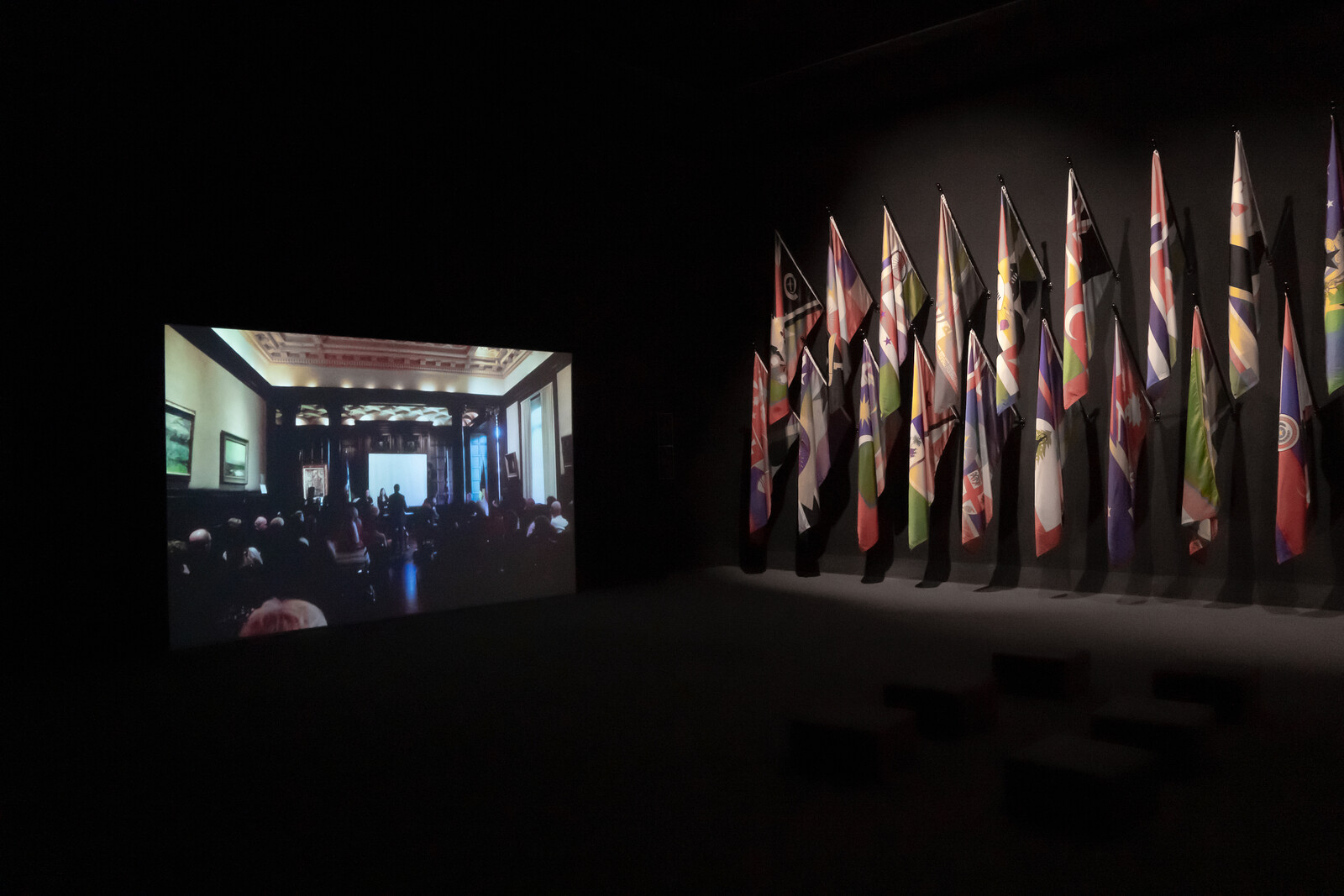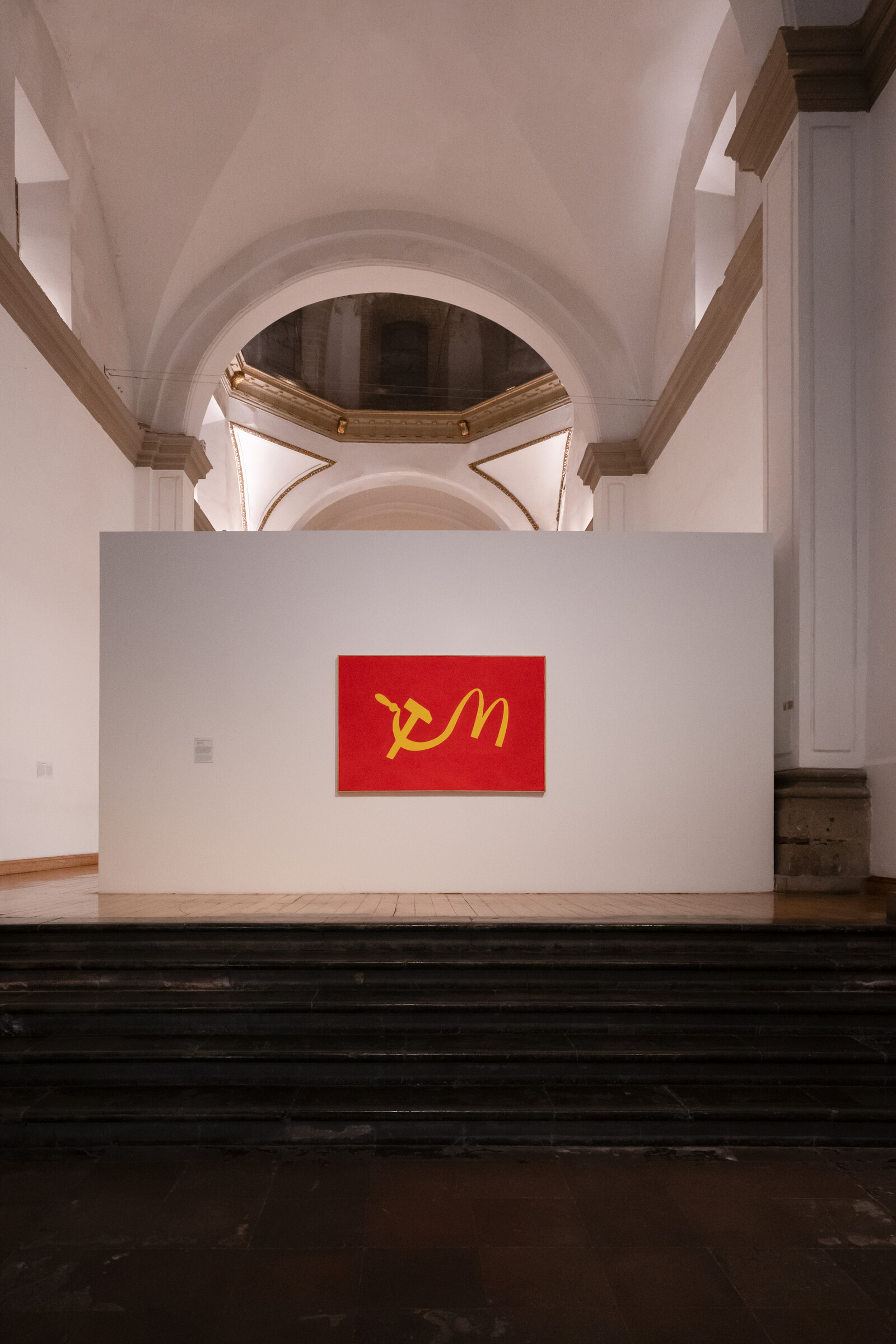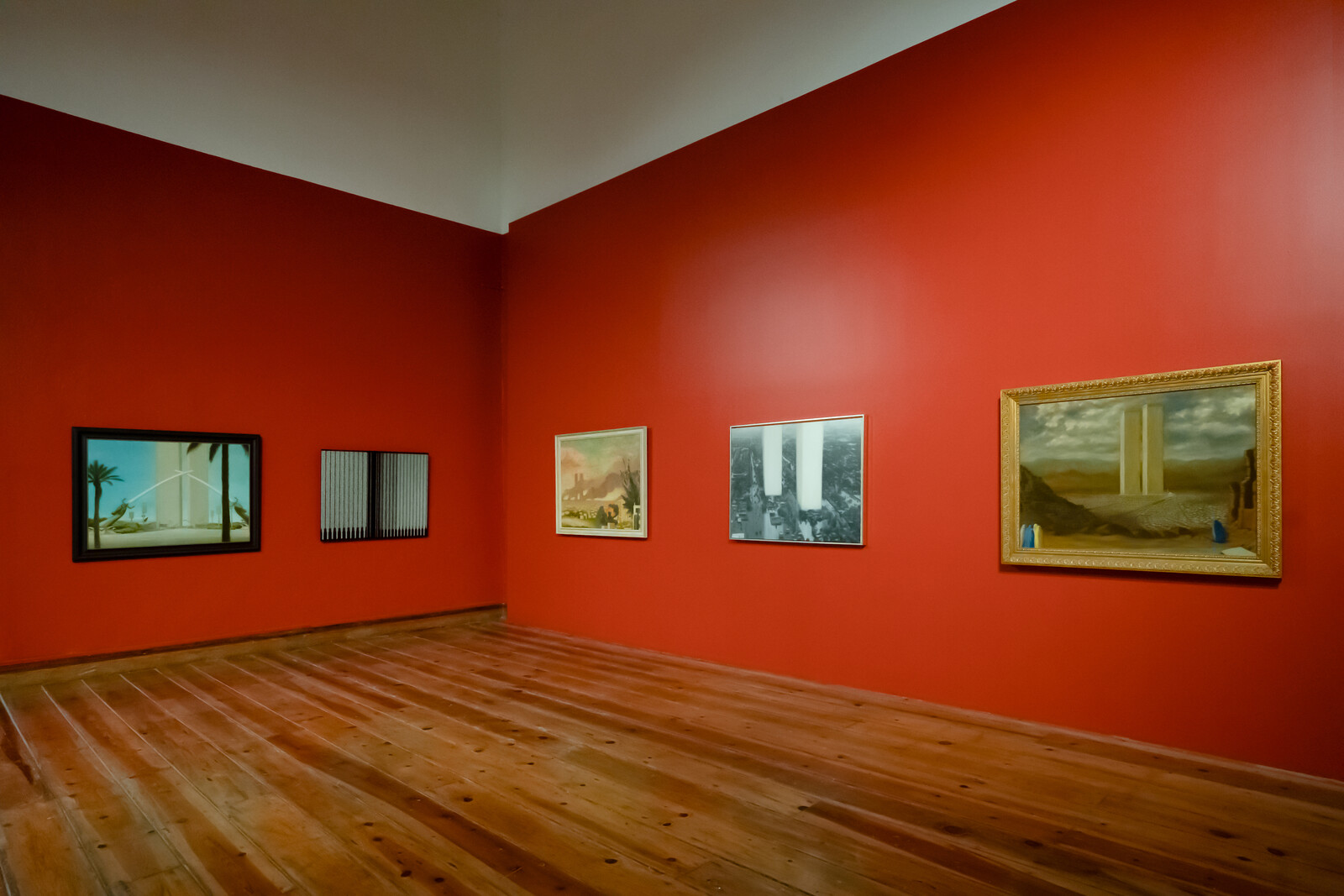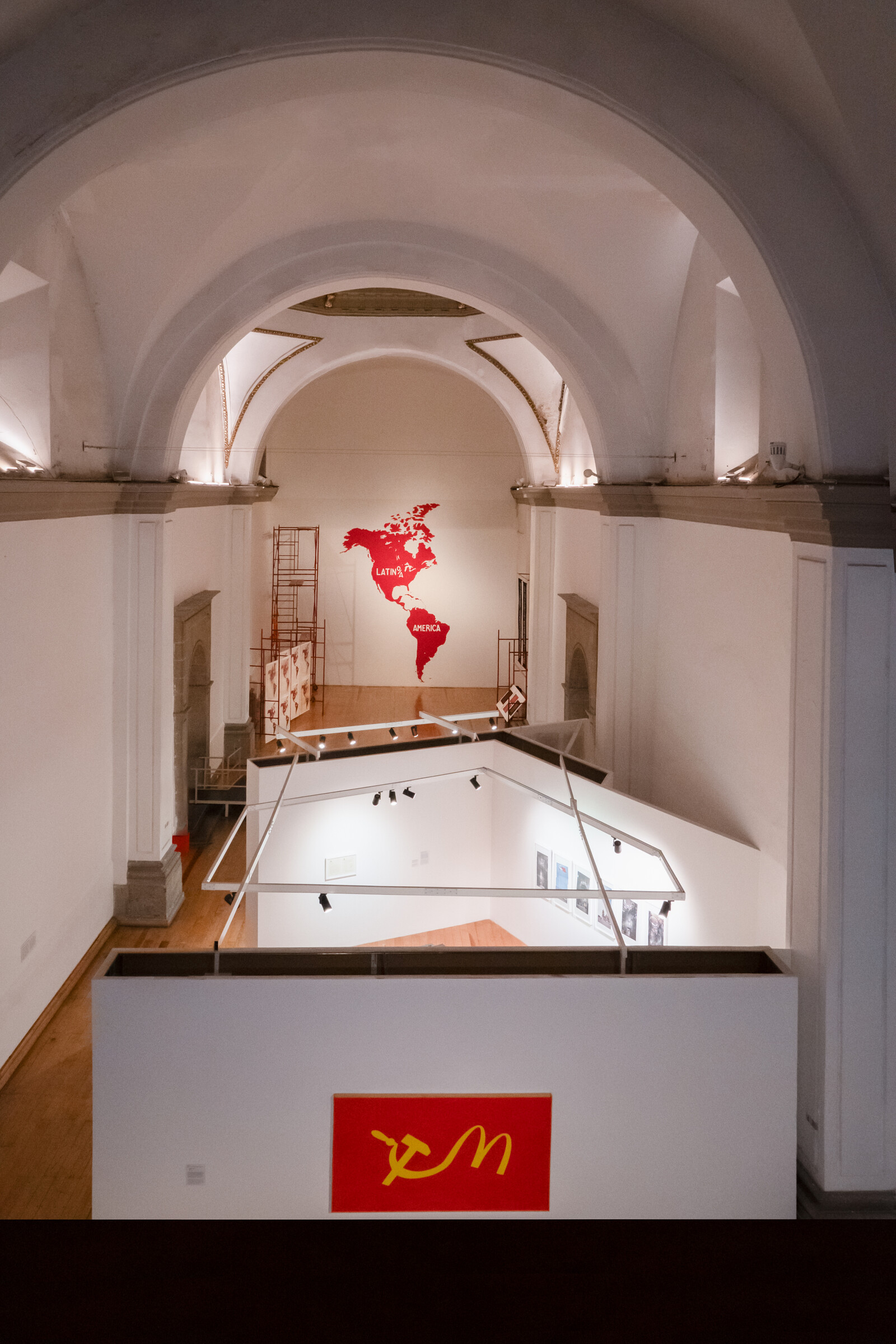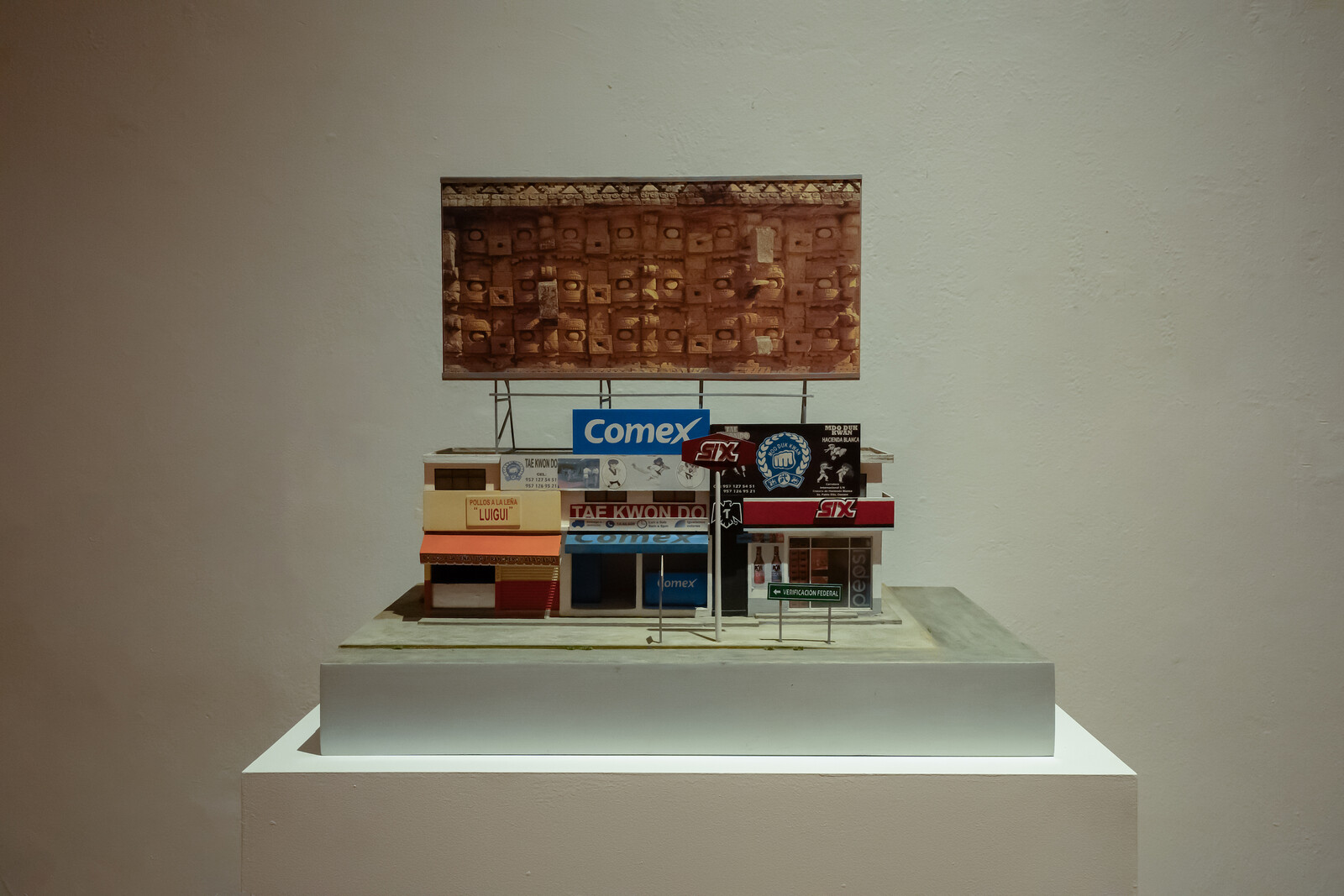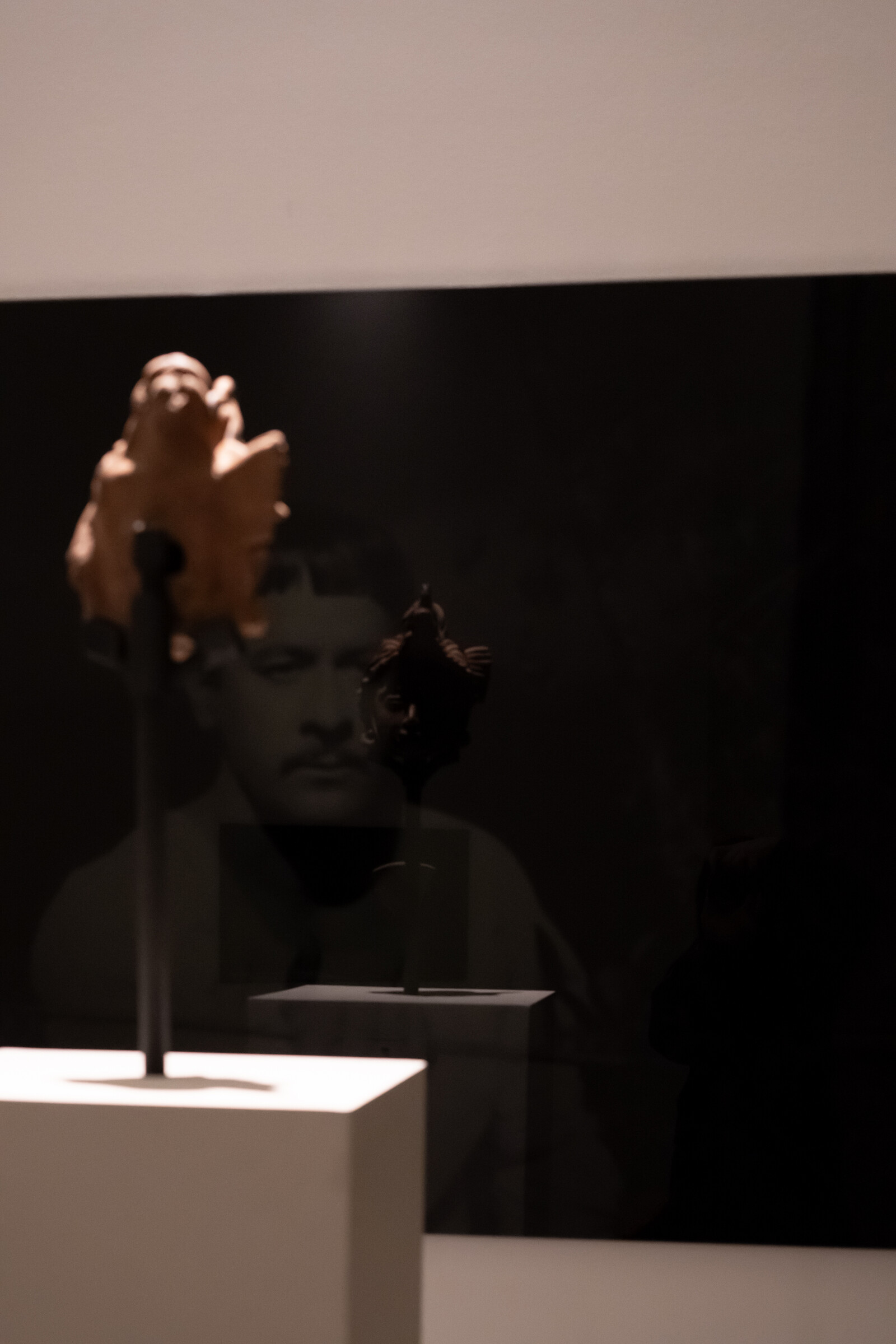Pedro Lasch’s mid-career survey at Laboratorio Arte Alameda begins with a painting—the ultra-deadpan McSickle, grande no. 1 (2003)—depicting a yellow hammer and sickle fusing with the “M” of McDonald’s on a red background. These two colors also happen to make up the Chinese flag. The painting exemplifies the multiple layers of Lasch’s practice: the artist is best known not so much for making things as for creating opportunities for social encounter and collaboration through his roles as an activist, educator (he teaches at Duke and is the director of its FHI Social Practice Lab), and cultural organizer (with the collective 16 Beaver). Yet the thematic survey “Pedro Lasch: Entre líneas / Between the Lines” manages to avoid the document-heavy trappings into which displays of socially engaged art sometimes fall because of how well Lasch’s social practice translates into objecthood. The survey shows that whether in the form of painting, installation, props, performance scores, or game instructions, Lasch has long been thinking about the tensions between colonialism and cultural exchange, and using art as an entry point into public engagement with a decolonial agenda.
These themes are on full display in the mural painted on the back wall of the main gallery, LATINO/A AMÉRICA (2003–23). One of Lasch’s most impactful works, it proposes a new map of the American continent based on the union of North and South America, both of which are rendered in red paint and labeled in white with the words “Latino/a” and “America.” Lasch first developed the work when he was working with immigrant organizations in New York in 2003, at which point he gave forty copies of these maps to twenty people who would be traveling between Mexico and the United States, asking them to keep one for themselves and return the other to him once they crossed the border. To the day, the artist has received ten of these maps back. They hang alongside the mural in various states of discoloration and disrepair, vividly indexing the uneasy encounter between cartographic abstraction and lived experience.
Lasch’s liberal remixing of political symbols like maps and flags continues with the installation Abstract Nationalism (2001–23). Along one end of a dimly lit gallery, Flag Fusions: Indoor Fabric Edition (2001/14) is a sort of absurdist display of nationalist ritual consisting of forty-eight flags, each a composite of the elements of different, now unrecognizable, individual flags. It is accompanied by the musical score Composition no. 46, Choreographic Score by Arístides Llaneza Sandoval (2001/14), in which the national anthems of four countries that start with the letter “U”—the United Kingdom, the United States, Uruguay, and Uzbekistan—are simultaneously sung in the language of the country that follows each alphabetically: the American anthem in Spanish, the Uruguayan anthem in Uzbek, and so on. The works fill the room with a cacophony of languages and symbols vacated of individual meaning; it’s impossible not to hear the work as a parody of the ways in which nationalism is not only abstract and abstracted but weaponized, used to depoliticize and mystify real violence.
Throughout the rest of the show, Lasch oscillates between macro critiques of colonial power and sustained looks at Mexico’s own imperialist ideologies. Maqueta no. 6 (2019), a model of a contemporary advertising billboard with a pre-Hispanic crest, and sardonic Ed Ruscha-style paintings about the idea of privatizing oil in Mexico like Simulated Gas Station Intervention (2010), share a room with Phantom Limbs (2001–11), a series of paintings which place the former World Trade Center’s Twin Towers in global sites of U.S. occupation: “WTC Kabul,” “WTC Baghdad,” the chilling “WTC Gaza.” Like many of the works on view, the series spans a ten-year period, allowing us to consider how little has changed since Lasch started making it.
The best work in the show is an installation from Lasch’s “Espejo negro / Black Mirror” series (2007–23), whose various iterations are made in response to the collections of their commissioning institutions. Espectro indígena / Indigenous Spectrum (2014), fittingly installed within the sixteenth-century chapel of the former convent that is Laboratorio Arte Alameda, was originally commissioned by the Museo Universitario de Arte Contemporáneo (MUAC) in 2014. Lasch selected sixteen pre-Columbian masks from the university’s permanent collection and positioned them on plinths facing large panes of reflective black glass. When viewers peered into the reflective surfaces to see the front of the masks in previous versions of the work, they were confronted with reproductions of European colonial-era paintings: Spanish priests and conquistadores drawing them into a meditation on colonialism and spectatorship. Here, however, Lasch’s black mirrors contain different representations of “Indigeneity” from Mexico’s postcolonial repertoire—among them actor Pedro Infante playing an Indian in the movie Tizoc (1957) and the widespread image of the winner of a 1921 beauty pageant called “La india bonita” (The Pretty Indian). Joined by the viewer’s reflection, the work collapses Indigeneity, coloniality, and the self into a single plane, an entanglement of bodies emphasizing the cultural and racial contradictions that make up the identity of the postcolonial subject. Facing this form of fragmented self-reflection is as urgent as it is uncomfortable.
